The new UK government has reconfirmed plans to equip Type 45 destroyers with ballistic missile defence capabilities, following an inquiry by Conservative MP James Cartlidge regarding the future of the Sea Viper missile system.
The confirmation, which comes from Labour’s recently appointed Minister of State for Defence, Maria Eagle, marks the first public acknowledgement under the new government that this critical upgrade to the Royal Navy’s warships will proceed.
The programme, known as the “Sea Viper Evolution,” is intended to enhance the Type 45’s Multi-Function Radar, Combat Management System (CMS), Command and Control (C2), and Aster 30 missile systems.
The upgrade is being rolled out in two stages, with the first already in the Demonstration and Manufacture Phase and the second currently under Assessment, expected to complete by 2025.
“The enhancement of Sea-Viper is named Sea-Viper Evolution, which includes upgrades to the Type 45 Destroyer’s Multi Function Radar, Combat Management System (CMS), Weapon Command and Control, and the Aster 30 missile,” Eagle said, reaffirming the Ministry of Defence’s (MoD) commitment to strengthening the destroyer’s capabilities.
Originally announced by the previous Conservative government, the Sea Viper upgrade includes plans for the UK to become the first European nation to operate a maritime ballistic missile defence (BMD) capability.
This will allow the destroyers to detect and intercept advanced anti-ship ballistic missiles, an increasing threat in modern naval warfare. The defence system will use the Aster 30 Block 1 missile, previously only available in land-based systems, and will be adapted for maritime use.
A £300 million contract for the initial stages of this upgrade was signed last year with MBDA, the European defence company tasked with converting the Aster 30 missile for use on the UK’s destroyers. This contract supports over 100 jobs in the UK across several key locations, including Stevenage, Cowes, Bristol, and Bolton.
As the Labour government prepares for its upcoming Defence Review, this confirmation of continuity underlines the importance placed on addressing longstanding concerns raised about Royal Navy vulnerability to ballistic missile threats.
“Joining our French and Italian counterparts will see us collectively improve the cutting-edge technology our armed forces possess,” said previous Defence Procurement Minister Jeremy Quin at the time of the initial contract announcement.




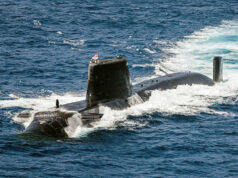

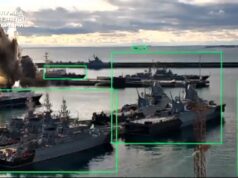
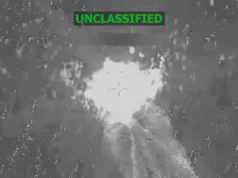
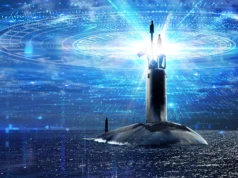

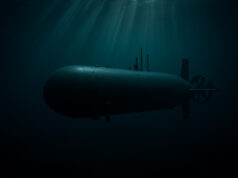

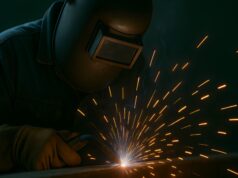

I thought it was the Aster B1 NT. A good candidate for a land-based solution.
The British military never imports anything to a standard and always insists on tweaking. I believe RN is upgrading to Aster B1 with a new warhead. So strictly neither B1 nor B1 NT.
Not quite. The T45s are currently equipped with the Block 0. Sea Viper Evo;lution is going to be carried out in two phases. The first upgrades our missiles to Block 1 standard. Which includes a new software for the active radar, new insensitive munition warhead and improvements to the flight control system and signal processing. The second phase is where we purchase new Block 1NT missiles.
This was reported about two months ago in Janes, Navy Lookout and here on UKDJ.
The Missile the RN has chosen is a variation of the one used in SAMP-T.
Totally Coll. It’s an absolute no brainer. The French have just order 8 sets of new SAMP/T and Italy another. Obvious synergies with RN and shared inventories too. And if they add MK41s to the T45s they’ll have even more options and capacities. Leave the CAMM silos for other ships, RFAs, for exports.
Italy has sea and land Aster and CAMM-ER, something the UK can also do.
Uk is developing CAMM-MR with Poland. CAMM-ER is still in development stage.
CAMM-ER is in service.
Edit: it was certified for it in 2023.
“CAMM-ER is in service.”
Not true! Only Italy’s armed forces has announced it’s intention to procure CAMM-ER. A contract amendment was signed this April, but still no sign of any deliveries, for operational deployment yet
CAMM-ER is in service in new Babur Pakistani corvettes under commercial name Albatros NG.
No need for Mk. 41 on T45. A mix of CAMM and Aster B1+, and NSM for ASuW,
is better value for money for the T45 AAW vessel.
It’s a colossal waste of forward space putting just 4×6 for 24 CAMM where you can put 2 x MK41s . For me a 48 CAMM and 4 ASROC to keep any subs at a distance would be more useful. Admittedly it would likely be expensive and may cause further delays.
I’ll correct myself, i think it’s France up to 20 sets and Italy 10 sets.
SVE1 which is being developed includes Aster blk 1. SVE2 which is less advanced will consider the use of block 1nt.
Isn’t Block 1NT the more advanced missile? It has a new seeker and a longer range than Block 0 and Block 1 (>150km for the 1NT compared to >120km).
Aren’t SVE1 and SVE2 essentially at a “guaranteed” implementation status w/ contracts already placed w/ MBDA? The really intriguing question will be potential RN participation in the Aquila programme, which presumably will address maneuvering ballistic missiles, and hpersonic cruise missiles and glide vehicles. That could prove to be a very sporting proposition from multiple perspectives (resource, technical, time sink, etc.). Strictly personal speculation, but that may prove to be the final phase of development, before DEW becomes a viable complementary system. 🤔
Yes the contracts were placed with MBDA earlier this year. Doesn’t stop the Government from pulling out and cancelling the upgrade!
Think of Aster Block 1NT as the equivalent to Patriot PAC 3 MSE. Whilst the current Block 0 and 1 are similar to the USN’s SM2 or Patriot PAC 2, but with better terminal performance. The Aquila project will be a competitor to THAAD and SM6, as it is an endoatmospheric interceptor, i.e. engagements over 100,000ft but below 250,000ft. Sadly it will be at least 10 to 20 years before we see it at IOC let alone FOC.
The current 2nd stage dart of Aster, limits its potential for reaching the same height as SM6/THAAD. As it would need a complete redesign to house more fuel. Bearing in mind the dart is a similar size dimensionally to Meteor. Whilst SM6 started off with the wider SM2 airframe. The next upgrade to SM6 will see it getting a bigger 2nd stage airframe to contain more fuel. Where it is expected to be able to reach targets above 150,000ft.
Thanks, stated timeline for Aquila is disappointing. 🤔😳☹️
My understanding the MOD saved money and only funded the B1 software upgrade which still uses the lower definition Ku seeker and not the new higher definition wave band Ka seeker fitted in the B1 NT, New Technology, as France and Italy, which enables defence of 1500 km range TBMs vs only 600 km with the B1.
Saving money on something like this and the T45s still having another 10+ years of service life? Seems a bit short sighted…by about 900km. Hopefully the higher grade will follow on.
Seeing as the carriers are defenseless and very sinkable why wasn’t it taken Into account two decades ago
The carriers are ‘extremely’ vulnerable in this era of mass missile and drone attacks.
T45 was conceived in an era when you might face 3 or 4 missiles fired at you.
Today, in a high end war with China (by example) with their huge (and growing by the month) fleet of highly capable missile armed destroyers, fielding the Chinese equivalent of Mk41 vertical launchers, an Aircraft carrier battle group could find itself being targeted by 30 or more supersonic sea skimming missiles in one sitting!!
We need ships with 80 plus SAM’s on board (long range and point defence) and capable robust layered gun systems like the 40mm and 57mm.
SSN’s are more important than ever, the UK absolutely needs a fleet of 12 10,000 ton AUKUS SSN’s, bristling with 50+ Spearfish and missiles.
Forward (SSN) defence, is going to be absolutely essential moving forward.
The issue is that is already out of date. The way both Ukraine and Russia have operated is combine expensive missiles with cheap drones in their hundreds to completely saturate air defences. It won’t be long before that figure becomes thousands.
The T45 was conceived for multi supersonic missile attacks. Thats why it has a system capable of engaging well over 16 targets simultaneously over 360 degs of arc at various altitudes.
Fitting CAMM releases the ASTER 15 VLS tubes to be used by ASTER 30. So the RN will have 48 ASTER 30 and something like 32 CAMM per T45. CAMM can take supersonic targets as well but not as far out as ASTER 30 and it covers 360 degs at various altitudes as well for again over 16 targets simultaneously.
Morning Gunbuster, I listened to another excellent Hypohystericalhistory youtube blog while on a long flight, ‘War in Indo China’.
Highly recommend, an extremely detailed hypothetical war situation in the Indo Pacific between the West and China in the early 2030’s.
It makes for a ‘very’ sobering listen, the ability of China to launch waves of dozens of supersonic sea skimming missiles at time is truly terrifying.
The main takeaway for me is the absolutely vital capability of SSN’s, to take on an enemy task group, many hundreds of miles ahead of a surface task group.
The other take away is that all our escorts need an extremely robust anti air capability!
24 CAMM on the T45.
I stand corrected!😀
Hi GB, isn’t it only 24 CAMM for the T45s? If they gave the six silos a stretch and made them 8’s for 4×8. An 80 missile shot load sounds pretty decent.
Mentioned above and by others here, installing quad CAMM in MK41s or ExLS will give you 32 if you wanted it. Current RAN Hobart’s and Dutch Tromps already do this with their 2×32 ESSM.
Not so sure on the very sinkable side, the US had problems sinking one of its carriers. Made inoperable is a whole different topic.
Sinkex have all exploding stuff taken out, all electronics etc. It is irrelevant except for engineers looking for specific particulars they are testing.
Second mission kill is often enough.
Why can’t the Type 45 intercept these missiles already? I’ve read that the sea viper missile system can Detect/ track & intercept an object the size of a cricket ball travelling at twice the speed of sound 30 miles away, why should ballistic missiles pose such a different level of threat?
Look at the deployment of HMS Diamond in the Red Sea, that revealed what Sea Viper is capable of even in its current form.
I’m aware of what HMS Diamond has been doing ( successfully) in the gulf region, but I ask again, surely the Type 45 is already capable of intercepting ballistic missiles, why the upgrade?
I’m no expert but I understand the current radar is capable of detecting objects in or at the minimum in near space. It would be even better with a third top upward looking unit as was offered some time ago. The combat system and the current missiles though capable are not optimised or sensitive enough to handle the job of interception at sufficient range, in particular fast and/or manoeuvring objects certainly at sufficient range. Upgrading all three areas gives a far more capable and reliable interception capability up to medium range ballistic missiles at extended range giving wider cover to a fleet as well as itself. Presently I do believe the system is claimed to have ability against short range ballistic missiles but obviously those type of missiles aren’t standing still either, increased speed reduces detection time and time to engage, while manoeuvring requires greater sensitivity and definition and a more manoeuvring capable defensive missile while range is always an advantage especially if you are getting into nuclear territory. So sometimes it’s not just the technical capability to take them out but the overall level of of the combined platform(s) to do so.
To try to add an analogy it’s often stated that even airport surveillance radar is capable of detecting an F-35 but targeting and ensuring a decent chance of hitting it is a very different matter.
Thanks for the reply, what you have to say makes sense, cheers.
Because those were short range Ballistic missiles, on a relatively low trajectory arc, Not medium or long range ones, with a much steeper & faster arc, That keeps them out of range of most anti-air missiles until they plunge back towards the surface..
The upgrade gives the T45 more reach due to increased range of the Missiles.
They can already. This is just the usual dismal propaganda.
The French already destroyed an Houthi ballistic misiles with their FREMM frigate Aster.
This is a better missile than current one, but it is an incremental capability.
Not necessarily, there are Ballistic missiles and then there are Ballistic missiles, in the same way a Robin reliant and a Ferrari Enzo are both cars..
Ballistic missiles travel a much different path, A high arc. Typically they arc down towards the target from high above and at hypersonic speed, Although atmospheric friction as they decend back into thicker atmosphere does tend to slow the terminal phase back down into the supersonic range.
It can and has hit a ballistic target but it was a low end TBM.
Medium range Ballistic missiles are a whole different target.
Range and flight profile, curvature of the earth, exo-atmospheric target engagement, speed of re-entry.
Viper can take Soviet era (still being used ivan) ASMs such as Kitchen. M4.5 at over 80K feet altitude doing a high angle death dive at you. TBMs have higher speeds and altitudes.
Its a system of systems issue being able to take such targets.
A long-range target detection radar (Smart L, the big flat panel rotating radar aft) that can reach out far enough and high enough.
Sampson that can track and provide data link targeting data to inflight missiles. This isn’t just the radar as it also includes track extractors
IFF so you don’t mistakenly kill your own aircraft if they are up.
A CMS that can fuse and control all the information and do the calculations for interceptions.
VLS systems to launch missiles
The missiles themselves with kill vehicles capable of working at high altitude where control surfaces don’t work so you need active course correction ( piff/paff).+
Shorter range missiles for targeting missiles at lower altitudes.
I honestly don’t know why the RN is not going for aster 30 block 1 NT..when you consider it’s going to be a far better missile.
I was actually looking at the planning and orders around the Italian navy and it’s starting to make the RN and RAF a bit anaemic to be honest…
so air defence wise air
from a airforce point of view,
1) they are ordering new typhoons to replace their tranche 1s..so they will be keeping 90 tranche 2,3,4 typhoons ( 20 of them brand spanking new)
2) and upping their f35 orders..for a total of 115, 40 F35Bs ( 20 dedicated navy, for there 2 carries + 20 airforce) and 75 F35A.
Thats a whole lot more air power than the UK
navy point of view for 2030 onward will see
Two 30,000 ton carriers for ( one a mixed aviation/landing dock)
Two 13,000 ton heavy AAW destroyers ( possibly the most powerful surface units in the world, with 96 silos for aster 30 B1 NT, land attack, 16 deck launched Antiship missiles, 5 inch gun, and76mm guns )
Two updated horizon AAW destroyers aster 30 B1 NT
fourteen FREMM Frigates, mix of 16 Aster 30 B1 NT and aster 15
seven patrol frigates with mix of 16 aster 30B1 NT and aster 15
Thats 21 ships armed with a better air defence missile than the 6 RNs dedicated AAW destroyers..
All that for 35billion dollars a year compared to the UKs 79billion dollars… it does show how the CASD, SSNs and 2 70,000 ton carriers has potentially warped the UK defence spend.
Why would you think the RN’s carriers would have significantly higher running costs over and above those of the 30,000 ton Italian equivalents.
Because of the facts mate, the Cavour cost around 1 billion vs 3.3 billion for an Elizabeth.. between 2 carriers thats 4.6 billion pounds of capital spending ( or around 11 modern well equipped frigates). Crew wise ( just basic crew needs not air wing) ..485 for a Cavour vs around 700 for an Elizabeth..
So you can argue the value of getting an Elizabeth vs a 30-40 thousand ton carrier..as that’s an opinion ( and my opinion is they are a good assets) but what you can’t do is deny the facts of the costs and how that has affected capital budgets.
I’d also add Sealift is something the RN does much better than the MM. Trieste really represents their only current Landing Capability (there are the San Giogrgios but they’re very small), while the RN has the Bays, Albions, Points, and Argus.
If we look to the Future, the Italian Sealift is going to be two LxD’s vs Six MRSS, and the Points (you can add Trieste in there as well if you want to not count it as one of the MM’s carriers).
Nuclear certified facilities have eaten a large chunk of change and focus for sure.
I don’t really see how the carriers ate my tanks/aircraft/frigates argument works.
They weren’t that expensive in the grand scheme of things.
The problem is the massive roster of niche capabilities and enablers. As well as the way some things are done and resourced.
I personally think the Elizabeth’s are a good asset..but an Italian 30,000 ton carrier cost 1 billion vs 3.3 billion for each Elizabeth..or basically 4.6billion of capital spend…that’s 11 decent well equipped GP frigates. That was a choice and that 4 billion would have made a difference…they also essentially ate the entire naval building capacity as well as the capital budget.
So in this case I would say the yes the state of the escort fleet is probably causal with the Elizabeth class.
The only reason the program ballooned in cost was the decision to push it to the right so often.
If they had been built to the starting spec at £1.8(?)Bn each they would have been a steal.
I wouldn’t over estimate that Italian carriers they aren’t really all that. They would be useful for Libya2 or something like that. But useless in a peer situation.
T45 is at a whole different level to FREMM.
Indeed and I’m not as I said making a judgment of right or wrong, simply pointing out the choices that were made and the compromises and consequences.
but the big thing for me that the RN needs to consider is how the Italian navy is setting up all its escorts to be part of a more diffuse air defence capability…every escort from its modest 4900 ton patrol frigate, it’s ASW frigates, GP frigates will all provide Aster 30 B1 NT, and aster 15s to any task groups air defence, lead by its higher end AAW destroyers.
RN is going diffuse too. T26/31 will have VLS. Which across the fleet is very substantial.
It will be interesting to see what goes in the Mk41 VLS.
The RN problem is how much of the budget goes on things nuclear as there was a distinct lack of capital invested for decades. Add to the the escort buying holiday….
That is not what Jonathan is pointing out He is saying ABM diffuse .
I can’t believe you are comparing that diffuse level with a short range missile like CAMM.
That is like saying every navy is diffuse because every combatant ship has a SAM.
Indeed. I checked again the numbers in the 10 year equipment plan. Nuclear- submarines, warheads- will account for nearly 40% of expenditure. Ring fenced, that will increase pressures on other programmes. Even allowing for that, Italy does seem to get a lot, equipment and personnel- for its more modest budget.
Going to throw some shade at your numbers there. A Type 45 carries 48 Asters and 24 CAMM in it’s upgraded form. That’s considerably more than even the Horizon AAW destroyers, let alone the FREMM’s and PPA Light+’s (remember that the PPA Lights are FFBNW Aster, the objective is to fit them at some later date and even the Light+’s don’t have ASuM’s).
Far from 21 Ships with better Air Defence than the 6 Type 45’s that’s… 2 that are better, and that’s if the Italian Navy goes with the DDX concept, which is a big if.
And then we compare a Type 26 with the Italian FREMM’s. Yes the Italians can carry Aster 30’s, but in a 16 cell VLS, where that might be 8 Aster 30’s and 8 Aster 15’s, it compares pretty poorly to a Type 26 with 48 CAMM missiles aboard.
Just going to do a bit of maths here.
For simplicity I’ve counted the Type 31 and DDX VLS cells as all being SAM, even though both will probably carry a mix, (although I’ve only counted the Type 26’s 48 CAMM Cells and not it’s 24 Mk41’s which certainly will be filled with something else).
So, adding up the Type 45’s, 26’s and 31’s you end up with, 976 VLS tubes, with Aster 30 and CAMM. (400 on the Type 45’s, 384 on the Type 26’s and 160 on the Type 31’s).
For Italy it’s 288 on the Destroyers, 224 on the FREMM’s, and 80 on the 5 PPA’s that are actually fitted with SAM’s, for a total of 592 VLS tubes.
Now, maybe we rate Aster 15 higher than CAMM, and we could argue that Italy has more Aster 30’s than the RN, but that’s still a big disparity in number of VLS SAM missiles that each navy can put into the air (and I didn’t even assume that the Type 31’s are quadpacking their CAMMs into their Mk41’s).
Hi Dern, yes but you also need to be look at the when and timelines…the big difference is the Italian navy never had the same likely 15 year pause between escorts being commissioned that the RN did..in reality until 2028ish the RN has 240 silos that can take and advanced medium to long range area defence missile on 6 ships..the Italian navy has 336 spreed over 17 ships..and that’s discounting the 80 standard missiles on the two older Durand de la Penne class.. it’s also go to more FREMM being commissioned in 2025 adding another 32 silos..with another 2 likely to drop soon as well as the order for the 2 heavy destroyers…and the Italians generally have a history of building the ships they say they are going to build ( they have been far more focused on their shipbuilding capacity than UK governments).
We also know all the Italian ships have a mixed aster 30 and aster 15 load…moving to an Aster block 1 NT at present the only published plan for RN frigates is for CAMM and for its AAW destroyers Aster 30 block 1 ( not NT)..
if you look at the planning around the PPAs they are all refitting up to either light+ or full configuration…so it seems the Italian navy played a game and had no intention of not putting 16 silos on everyone..it’s just they will probably have only five full fit ( that includes a towed array on top of aster 30 block 1 NT)
in essence if you look at the last 24 years..apart from a couple of years Italy has laid down an escort or two every year..and that now shows in the quality and quantity of their escort fleet. So it’s likely to see the two heavy destroyers and 2 more FREMM started over the next few years as that’s been simply what they have been doing..so no reason to doubt really..sadly Italy is better at building escorts for its navy than the UK and on average those escorts are more rounded.. the ASW escorts can meaningfully add medium and long range area defence missiles to the screen and the AAW escorts can act as part of an ASW screen..in reality would the RN add aster 30 block 1 NT to a general purpose frigate or an ASW frigate and a decent set of ASW sensors to an AAW escort …Italy does and it plans for its early 2030 escort fleet to have 28 major surface combatants vs the RNs plan for 19.
The problem is you can’t discount CAMM because in the Italian navy Aster fills both roles. Effectively you’ve got an extremely cherry picked number to get to 288 (um no?) on one hand and 336 on the other. ie Assuming that every missile is an Aster 30 in it’s latest upgrade configuration. That’s something you absolutely can not do if you are trying to do a fair comparison between the two navies.
Even if you decide to do run with that extremely cherry picked number the simple counter is that the RN is much better prepared for a saturation attack than the MM is.
True, but I was focused on the high end longer range elements, so ballistic missiles and the launch platform ( naval aviation), with a range of 16 miles CAMM is able to defend against the effector, but not target the airborne launch platform. It’s a good short range air defence missile, but it’s not an area defence missile, which means the RN only has the six ships with area defence capabilities…where as every Italian escort can throw into they fight.
When you’re taking swarm attack..you cannot discount the difference paradigm in gun armament. At preset the RN does not have a single escort armed with a medium gun that can engage in AAW ( I don’t count a 30mm as a medium gun). The horizons have 3 medium guns ) 76mm) the FREMMs all have two an Italian escort can put a lot more ( 2 76mm or a 126mm and 76mm)..the RN escorts can fire 30mm shells at an air target…that’s not 2-3 medium guns as well as 25mm cannons.
Okay but then we’re talking the future in which the RN has 8 Type 26’s with an AA capable 127mm on the Type 26’s and the Type 31’s with 57s and 40’s). (on the 25mm’s you are cherry picking again as your counting those but not the RN’s phalanx mounts, which fill the same role).
Ultimately the only thing that’s holding the RN’s AA gunnery back in a future scenario is reintegrating the AA capability into the 4.5’s. So again, I think you’re really overstating the difference here.
Hi Dern but again it’s timelines and reduced capability, that’s common across a number of facets and that all adds up.
If we look at the timeline of gunnery based AAW ( still pretty bloody important).
The RN for at least the next 4 years is completely limited to 30mm, now both 30mms are good guns on good mounts but in the end their effective range for anti air is 2000-2750 meters ( depending on type) and they are using very limited ammunition types ( I will leave phalanx as its is a 1km last ditch self protection only capability, so not part of the AAW equation).
Even when the type 26 and 31 start coming on line, you will not be seeing a great number of escorts with anything better until the 2030s and around 2035 you will still only have 70% of the escorts with AAW medium guns. Most importantly the dedicated AAW destroyers will not have a AAW medium gun..which quite frankly is bonkers considering they are the ship that will be sent down the threat axis. So I think it’s important to be clear that even by 2035 the RNs AAW gun loadout for all it’s escorts will not be optional..at a very minimum the T45s should be getting a AAW capable medium gun ( 57mm or 127mm) as part of its refit, well as 40mms if possible, The T26 should get a pair of 40mm if possible as well. So at best in 11 years the RN will have 13 frigates with medium AAW guns 5 with a 57mm and 8 with a 127mm.
In reality there is likely no way to reactivate the AAW capability on the 4.5inch gun, otherwise it would have been discuses as an option…I suspect the MOD disposed of all the ammunition.
That picture is not pretty when compared with the Italian escort fleet I’m afraid.
As of now every single escort Italian escorthas a good AAW medium gun option all with guided AAW munitions and effective AAW ranges out to 7000-10000metres. With every escort having at least 2 medium guns and the AAW destroyers 3..all having at least one 76mm super rapid with dart ammunition, arguably the most effective AAW medium gun anywhere ( balance of: water cooled foe sustained fire, range, guided munitions and rate of fire).
But the gun element is but one facet..the single biggest impact is escort numbers..it’s inescapable. The RN and the Italian navy have been on completely different trajectories in regards to surface combatants, the Italians navy up and the RN down..and the have now crossed paths..
The inescapable truth is that the last defence review not driven by cost cutting in 1997 set out in the 98 defence white paper a clear need for around 32 major surface combatants for the RN to fulfill its roll in a unipolar generally peaceful world. The 21c has been an ongoing disaster where this minimal need was completely ignored for a number of reasons..to the point now anyone even mentions 30 escorts they are consider fantasists.
So it’s important to plot the two fleets escorts
The RN in 2000 had 11 AAW destroyers and 21 frigates for 32 combatants..as described. By 2010 this was down to 23, 2013/14 saw it reduce to 19 and now in 2024 the RN are down to 14 escorts with a potential it could drop further before the T31s and T26s all get commissioned. But even the the present trajectory is 19…for 3035. This catastrophic drop ( and it is catastrophic) was causes because the RN will have had a period of 14-15 years without commissioning a single escort ( the Italian navy has pretty much commissioned one or two a year in that timeframe)
The Italian navy started 2000 with 20 escorts, 2 small AAW destroyers and 18 small frigates. By 2024 they have maintained that number but instead of 2500 ton frigates, they have 5000-7500 ton combatants. The build plan is by 2030 to have 26 surface combatants from 5000 to 13,500 tons…all modern all armed with Aster 30 block 1 NT…I’m sorry but that is a far better position than the RN will be in with its 6 aster 30 block 1 armed ships and probably 9 CAMM armed frigates ( yes they make fine close area AAW ships, but they cannot do two vital things…launch a weapon than can engage a ballistic missile or kill the aircraft launching an AShM strike) and what is worse is the RNs commitments are greater in number and more challenging than the Italian navies.
It was never a plan for the RN escort fleet to be where it is, it’s was never assessed as only needing 19 escorts or that it would be fine to drop to 14 for a bit.. it always needed around 30-32. 10-12 good AAW ships and 20-22 frigates ( mixed high low) it is where it is because of inappropriate compromises, incompetence, poor decision making austerity and its budget being spreed over to many areas ( the CASD and its supporting SSN programme, carrier strike, maintaining a credible Amphibious force, its global enablers ( RFA), mine warfare and the RM as well as the escort fleet…which ended up at the bottom with the Amphibious fleet.
So yes it’s great the RN are getting recapitalisation of its escorts, but it’s:
1) a decade late
2) short by around 13 ships
3) has two many corners cut on its new escorts, all the ships should be able to contribute to the ASW battle, even if it’s just a hull mounted sensor set, and all the escorts should be contributing to the AAW battle beyond a short range capability..and whatever anyone says…pretty much every major western navy adds ASW capability to its AAW destroyers and GP frigates and a reasonable medium to long range AAW capability to its ASW and GP frigates.
Again I’m fine not counting Phalanx, but you can’t go ahead and mention the 25’s on FREMM and then just discount Phalanx, sorry. And your “Well the RN is in a bad place now with guns.” Is where my issue lies, because you’re swapping between looking into the future for the MM and looking at now for the RN to try and pick whichever suits you best. Stick with one or the other.
If you want to argue that the MM has a better gun armament right now, fine, but then you don’t get to argue that they have a better missile armament, because they currently really don’t, being realistically limited to two Destroyers and their FREMMs which have at best 4-5 Aster 30’s each.
Or we can look to the future (and even in the future I have issues with your assessment because you assume every Italian VLS tube will have an Aster 30 in it, which they won’t because they need to reserve some of their tubes for Aster 15’s) where the RN will have a slightly worse ABM capability, but a much deeper magazine that won’t see ships being dry after a handful of intercepts, and a gun layout that’s at least comparable.
If you talking about the future then the PPA light will not exist.
DDX already have been approved
I think the point of DDX are for large ABM.
The future is a big time. Maybe a day will come when I want an uniformed opinion. I’ll make sure to ask you when that day comes.
Your informed opinion is full of mistakes as usual.
Oh dear, how sad, Mr Dunning and Kruger has an opinion, let me check to see where I care about it.
Nope not found.
Bore off. Find someone who cares about what you have to say.
As mentioned in earlier post my understanding is that the RN will not be upgrading to the Aster 30 BI NT which is roughly equivalent to the PAC-3 MSE which said to have max range of 160 km but against ballistic and hypersonic missiles due to their much higher speeds the max range is limited to a short 30 km even with its very high definition/Ka waveband seeker. The NT quoted ability to take out 1500 km ballistic missiles makes its problematical even if it can take out the Chinese DF-17 / DF-21 anti-carrier missiles with range said to be 1600 km plus (remember seeing the sat pics of the outline images of the US carriers in the Chinese desert so at to enable testing their DF missiles targeting).
Don’t know the Aster 30 B1 range against 600 km SRBM but maybe 20 km – 10 nm and would have thought minimal chance defending against the faster Chinese DF missiles, stand to be corrected.
What does not help think fair to say nearly all Western Navies are fitting the new gen GaN radars which can pump out five times the RF energy either for longer range or longer dwell times for better targeting. Not saying the T45 S1850M and Sampson from the early 2000s are not good radars but time and tech has moved on, the four French and Italian Horizon frigates are being upgraded with new GaN radars in a £1.3 million MLU.
Needs the Sea Ceptor insertion first in order to make room for more Vipers